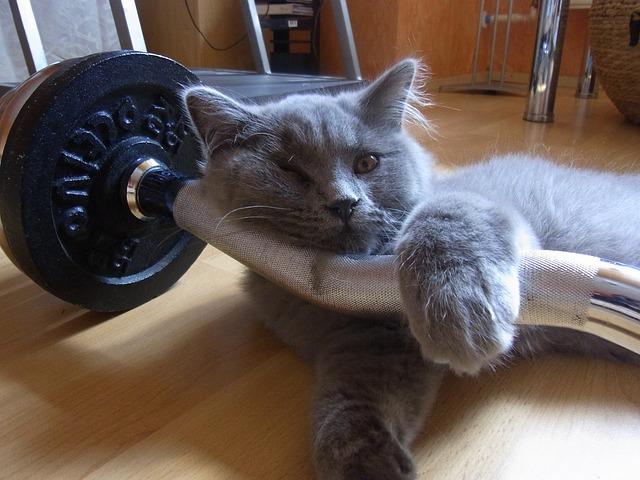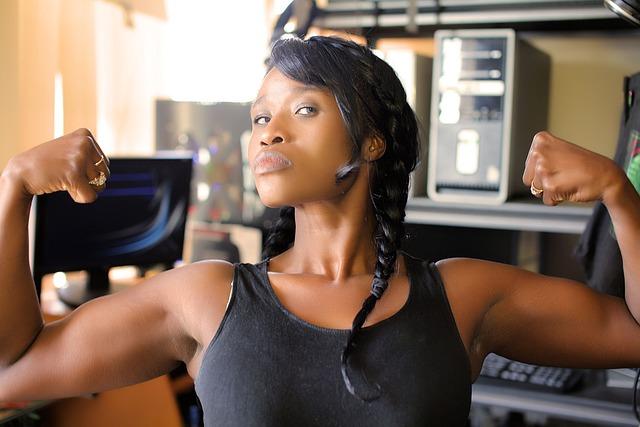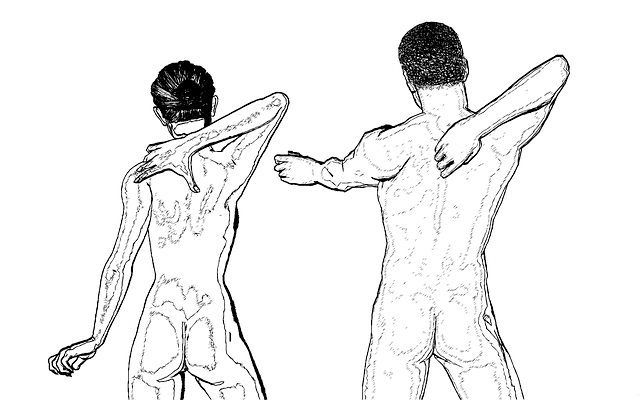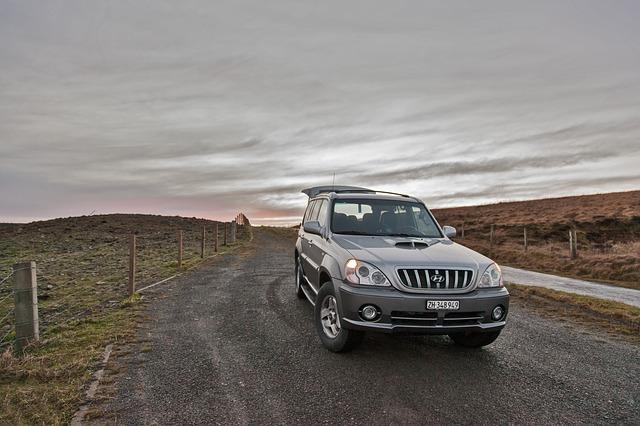Posts by adminjosh
Using your Hips to Fight Lower Back Pain
The problems facing your hips are myriad.
Let’s focus on how it relates to low back pain. As the largest joints in the human body, the hips are meant to support the weight of the human body during both static and dynamic (moving) posture. The entire region, known as the pelvis, contains the two hip bones which connect by way of muscles and ligaments to the sacrum to form the sacroiliac joint. Because there is a complex network of nerves which control muscles and organs in the local area, the sacroiliac region is prone to misalignment and painful nerve irritation.
Hip mechanics have gone out the window
It’s something that we all seem to “unlearn” at some point along the way to becoming an adult. We stop using our hips for motions such as lifting and twisting, and the lower back must perform this movement, which adds to its already considerable burden. For a basic lift, we all know that we are supposed to squat down to the object, then thrust forward with the hips to initiate the lift. But in our infinite laziness, we often forego this motion and just bend over to pick up and object. This sets a trend for many motions in which the lower back is unfairly asked to pick up the slack of the hips.
Hip mobility also faces problems due to excess sitting: when we are sedentary all day, the many muscles in the hip region are conditioned to remain contracted. This leaves them vulnerable to injury when we ask them to do basic elongating movements such as walking or running.
The clear truth is that using your hips properly can help fight lower back pain.
At Hayes Family Chiropractic, we want to help you relearn what was lost- by teaching you about proper body mechanics and when to apply them, you can stop overburdening your lower back. Furthermore, we can provide relief to those tight hip muscles and realign the lower spine to prevent nerve irritation from affecting you further. By adhering to proper body mechanics, stretching and strengthening the right muscles, you can go a long way toward preventing degenerative joint disease and other problems in the lower back!
Dr. Chris Hayes, D.C.
The Hype about Micro-exercising
Micro-exercise is the idea that you can capture great health benefits from small doses of workout
How do we define the value of 60 seconds? 10 minutes? Certainly these small blocks of time can be measured in terms of productivity, but what about in terms of the benefit to brain and body? All across America workers are saying (whether honestly or not) “we don’t have enough time to exercise.” On the flip side, your brain and body can’t afford not to exercise. Micro-workouts offer an exciting go-between that allows people to take advantage of small blocks of time throughout the day when they don’t have the time for a full work out. It is certainly tipped to become one of the great health trends in 2017.
Why do it? Microexercise:
-
Gets your heart rate up and blood flowing
-
Recharges brain and body before returning to work
-
Trains muscles that matter for posture
-
Relieves muscles from the monotony of sitting for hours on end.
-
Encourages the elongation of muscles which are being conditioned into a state of constant contraction.
Micro-workouts should serve a purpose
They should not take the place of a full workout routine, or become your only method of exercise. They should be used on days when you can barely escape the office; when you wake up feeling gym-shy or unable to move yourself to run. Micro-exercise is more along the lines of keeping a jump rope or a set of dumbbells under your desk so that when the opportunity strikes, you can seamlessly jump into a work out. A set of jumping jacks, push ups or lunges should be done thoroughly- it is worth following a 10 minute full-body yoga or Pilates plan.
Micro-exercise, like chiropractic, is about optimization.
The science is overwhelmingly in support of exercise for people who spend significant amounts of time deskbound. At Hayes Family Chiropractic, we support any initiative that gets your body moving during a day of heavy sitting. Give our office a call so we can start working together to create a plan for your fitness that keeps you free of the tension and dysfunction that accumulates from hours spent stationary.
Dr. Chris Hayes, D.C.
Using Body Weight: The Cheapest Way to Train
Body-weight training is trending this new year and for good reason.
It has a lot of factors that line up with a modern mindset: it’s free, easy to learn and quick to implement. It’s versatile, able to target different parts of the body which need improving and can (most likely) be performed from wherever you are reading this blog. Using solely the weight of your own body as resistance, you can start building and maintaining the muscle necessary to keep your body healthy and your posture proper.
Here are some benefits of body weight training:
-
Increase relative strength, or your strength in relation to your own body size.
-
Increase reactive strength, or your ability to stretch and contract your muscles.
-
Boosts circulation and improving the range of motions in joints.
Basic types of body-weight training include:
- Push-ups
- Planking
- Squats
- Lunges
- Pull-ups
At our office in Dunedin, we can show you how body-weight workouts align with chiropractic principles regarding total wellness. The great thing about body weight training is that it is adaptable to any fitness level- no matter how much you weigh, or how little you work out, we can design a plan that will challenge you and help you strengthen the parts of the body that really matter for longevity. Our objectives are to help you find better balance and increase core strength to help with posture, move with less pain and improve circulation to the brain and body.
Dr. Chris Hayes, D.C.
Losing Weight is a Mind Game
Forget about looking great and focus on real reasons for losing weight.
Chasing an ideal body image or losing weight simply for the approaching beach season are “reasons” for losing weight, sure, but they are not much more. They let you down because they are superficial by nature: there is no such thing as an ideal body image- your body is unique to you and while looking great may make you feel great, it is secondary to achieving a healthy weight for the purpose of improving your life. Likewise the health website that tells you losing weight will reduce your risk for many diseases- this is unhelpful because it fails to connect to you; it is too open-ended. When it comes to weight loss, the more compelling reasons (and the more personalized they are) are the ones more likely to make you follow through with your plan.
At Hayes Family Chiropractic, we approach weight loss from an evidence-based angle.
Every single pound over your target weight is adding a burden to your joints, causing them to degrade quicker over time. Furthermore, too much body fat is linked to chronic inflammation. While degenerative joint disease may seem like an abstracted condition for the elderly, trust us when we say that it’s effects are life-altering and the pain is real! And it is a misconception that conditions like osteoarthritis are confined to the elderly- they can be experienced at any age and being overweight certainly contributes to their development. Knees, hips, and intervertebral discs are all at risk when excess weight is present. And when your joints start hurting, you stop moving, meaning weight gain and more pain; the condition perpetuates itself. The easiest way to break this cycle is to focus on getting to a healthy weight.
How we help with losing weight at our office in Dunedin
We support a well-rounded, healthy lifestyle. Yes, this process begins with those things you hear time and again: diet and exercise. But how can you think about exercising when pain or dysfunction is holding you back? Chiropractic helps align the spine, free nerves from impingement, assuage sore muscles and improve range of motion. After all, when moving is easier, you are more likely to do it. More than anything, losing weight is about taking your health in your own hands; with this endeavor we can help you!
Dr. Chris Hayes, D.C.
New Years Resolutions with a Side of Reality
One in three Americans will be halfway through the first week of their new year’s resolutions, many of which have to do with “becoming healthier.”
And how many people will still be on track 1 month from now? 6 months? The spirit of the holiday season imbues many of us with grandiose ambitions for the future: we are going to lose weight, quit smoking, and learn how to manage stress; we are going to run more often, reduce alcohol intake and sleep better (or more). These broad, open-ended goals often lack the precise definition and detail that will help us stick with them.
Achieving a new years resolution depends on being realistic, defining the scope of your goal and putting in hard work.
Things like losing weight, stopping a smoking habit or learning how to manage stress don’t happen overnight- but we want them to. And this is how we end up defeating ourselves- once it becomes apparent that we don’t “look or feel any different after a week, our resolve starts to weaken. Nothing great was ever built in such a short time span; if we learn to adjust our expectations, then we will not only boost our chances of success but also feel more calm along the way.
Beware of “quick fixes” and forget about “instant gratification”
A quick fix is usually code for an incomplete plan that promises a lot on a very thin premise; instant gratification is unrealistic. Committing yourself to a new years resolution means you are going to be in it for the long haul, so get excited about it: curate and write down the good that will come out of achieving your goal. At Hayes Family Chiropractic, you will find no shortage of inspiration regarding your health. Whatever your health goal for the new year, we want to be there to augment your plan and keep you on track!
Dr. Chris Hayes, D.C.’
Seasonal Depression: How to Overcome It Naturally
Seasonal depression is thought to affect 10-20% of Americans
Seasonal depression, seasonal affective disorder, winter fatigue, tiredness; it is a stark reality that during the winter months we are more prone to drops in mood and a dearth of energy. While many people will suffer from fatigue in the winter, for others it takes on the more serious form we know as seasonal depression. There is a biological reason: seasonal depression is a manifestation of a shortage of daylight; the hormone that controls our sleep and waking cycles, known as melatonin, is produced in greater quantities and this could be the end reason for your enhanced level of sleepiness! We are helpless to control the seasons, but we can exercise control over our lifestyles, and this will determine the degree to which the winter months hold you back.
What you can do in the face of seasonal depression:
-
Control your diet: think about the foods which give energy and those that take it away. Complex carbohydrates contribute clean burning fuel that keeps you going while sugar often boosts you temporarily but leaves your blood sugar low in its wake.
-
Exercise: it gets you outside, it gets your heart rate up and endorphins rushing, and lets you recoup some of that valuable vitamin D from sunlight that is harder to come by in the winter time.
-
Control your environment: try to let natural light in, light candles and create a relaxing space that buffers stress at home.
Winter does not have to be your period of seasonal depression.
At Hayes Family Chiropractic, we believe that with simple lifestyle adjustments and regular chiropractic care, you can boost your vitality and keep energy levels high throughout the season. Chiropractic adjustment balances the spine and regulates the nervous system, helping you to think clearer and the energy to flow more freely. While chiropractic is not a direct treatment for seasonal depression, we can help you to address shortcomings in your lifestyle which could be contributing to the overall condition. Today marks solstice and from now on the days are only going to get longer, so take heart and call your Dunedin chiropractor to schedule an appointment today!
Dr. Chris Hayes, D.C.
Importance of the Lumbar
Low back pain is one of the foremost afflictions of modern life.
And it begins with the lumbar: by diameter, the five largest vertebrae in the human body are those of the lumbar and they are responsible for bearing the weight of the upper body. In fact, we would be fortunate if all they had to do was support our weight; we often call on them to do a lot more, which is why they are the most often injured. Motions such as lifting or twisting are too often performed with the lower back as the primary power input or force creator, causing strain to the large muscles and ligaments which support the vertebrae in the lower back.
The importance of the lumbar region
Besides the weight bearing duty, we also see a network of nerves known as the lumbar plexus that exit the spinal cord in the lumbar region and influence many critical functions of movement- namely the mechanics of the abdomen and legs.
The most common reasons for lower back pain
- Muscle strain-
- Disc herniation
- Disc degeneration
- Bone spurs
- Breakdown of the cartilage
- Facet joint syndrome
These conditions become more likely with age, as our lower backs begin to succumb to the compounded years of movement which we have put them through. The problem is also worsened when we don’t take care of our bodies, i.e. carrying around too much weight with weak supporting muscles, or executing movements without awareness of proper body mechanics. This is where we step in.
How we make a difference at Hayes Family Chiropractic
Prevention is key: if you are in the fortunate position of owning a lower back that doesn’t give you too much grief, there is no better time than now to start strengthening it against the incursions of age. Through strengthening of the auxiliary muscles, application of good posture and proper body mechanics, we can ensure that the lower back has the greatest possible advantage. And if it is feeling under fire, we have modalities such as spinal adjustment, decompression and trigger point therapy that will help speed the recovery process and get you to a point where strengthening and moving forward is a real option. Give our office in Dunedin a call to schedule an appointment today.
Dr. Chris Hayes, D.C.
Dynamic Stretching
Warming up the right way.
At Hayes Family Chiropractic, we believe that exercise should be a fluid activity and this begins with the warm up. Rather than jolting your muscles into action with a quick warm up or no warm up at all, we want to focus on easing them into the swing of motion gently. Think of your muscles as being contracted when you initiate a work out: in order to loosen them up, we need to add heat. The best way to do this is by slowly raising your body temperature so that muscles naturally warm and loosen. This gives you optimal range of motion and prevents the kind of injury that occurs when you apply stress to an overly tight muscle.
Dynamic stretching is the right way to warm up.
Dynamic stretching is the kind that combines momentum from movement with static-active stretching in order to transition your muscles from cold and contracted to warm and ready. Whether you are going to lift weights, play sports or pursue light cardiovascular exercise, this is the warm up that will activate all the muscles you will need during your work out.
- Improves range of motion
- Improves coordination and overall performance
- Boosts power
- Helps muscles to contract and relax easier
Often, dynamic stretches include a standard stretch with a movement adjoined to it: for example, the lunge with a twist, or hip stretch with a twist. These are easily learned movements that ensure your body is primed and ready for the work out ahead.
Hayes Family Chiropractic is your resource for improving athletic performance.
We support all of your athletic endeavors, and begin by addressing any physical limitations that may be holding you back. By ensuring the proper alignment of your spine, treating tense muscles and improving range of motion, we help your body stay in top physical shape. Give our office in Dunedin a call to schedule an appointment today.
Dr. Chris Hayes, D.C.
The Role of Posture in Headaches
Headaches are often a reflection of our lifestyle.
Work weeks can often fall into a pattern that varies to the individual but generally sees us waking up, commuting to work where we sit for hours on end, returning home for recreation in the evening, sleeping and repeating. Within this framework, physical and mental stress is constantly cycling and it requires hourly dedication to keep it in check. The demands of the workplace challenge our discipline when it comes to wellness-awareness: things like checking our posture, or getting outside for a breath of fresh air are neglected. This sets a dangerous precedent, whereby allowing stress to accumulate in the day can carry over into your non-work life to affect sleep, exercise and overall happiness. Headaches are a great example of this: if we leave work with a slight tension headache, it is easy to write them off as “normal” or “regular;” just a part of being an adult and going about our daily business. This is simply not true- the headache is a signal that something, somewhere is wrong and it is asking for you to fix it.
Posture can play a direct role in the presence of headaches.
Even 2 hours in front of a computer screen is a fretful prospect for the spine, so 6-8 hours is simply monstrous. As the minutes slip by, we find it easier to slip into poor posture- our chins start inching toward the screen and the head follows; the upper back rounds and the shoulders start to creep up toward the ears. Any sense of balance has now been distorted as the head’s weight is now magnified in relation to the rest of the spine causing the neck and shoulder muscles to compensate to provide stability. This creates muscle spasms in the upper back, shoulders and neck that are referred to the nerves in your head and which you experience as a headache!
What to do about it?
Fixing your posture could go a long way toward solving the presence of chronic headaches. From our end, we can provide you with chiropractic adjustments which ensure that the spine is in a state of alignment and balance; provide trigger point relief for knotted and tense upper backs and offer massage therapies that relieve stress and encourage the healing process. From here it is a matter of training the right muscles that make posture easier- the core for a start and the upper back muscles that help stabilize the shoulders and neck.
Dr. Chris Hayes, D.C.
Posture in the Driver’s Seat
What does your back look like when you are driving?
Most of us probably couldn’t even see a mental picture. For many people commuting is a fleeting, sub-conscious activity and, by treating it as such, we rarely give our backs the attention to detail that they deserve during the drive. To begin with, car seats are hardly conducive to healthy posture and we often end up hunched over or forward; slouched with our arm on the center console; shoulders tight, creeping toward the ears. Even minor commutes with poor posture put unnecessary pressure on the spine, joints and muscles in the back.
How am I supposed to look?
- Sitting up straight with butt touching the back of the seat
- Chin level and head centered over the spine; often this means the head is touching the head rest gently.
- Hips square, keeping the base of the spine and pelvis aligned
- Hands at 9/3.
If you must sit for a daily commute, this is the kind of posture that distributes forces evenly and prevents muscular imbalance from accumulating over the course of the trip. A longer road trip obviously calls for some variety in position so listen to your muscles; if they become stiff or sore, you know that they are becoming wary of whatever posture you have been locked in for the last hour. It is always prudent to pull over and give your shoulders a shake or do some simple stretching so that you can stay loose during the trip.
Posture is a specialty here at Hayes Family Chiropractic- we want to help you find good form with every activity that you do regularly.
Dr. Chris Hayes, D.C.









